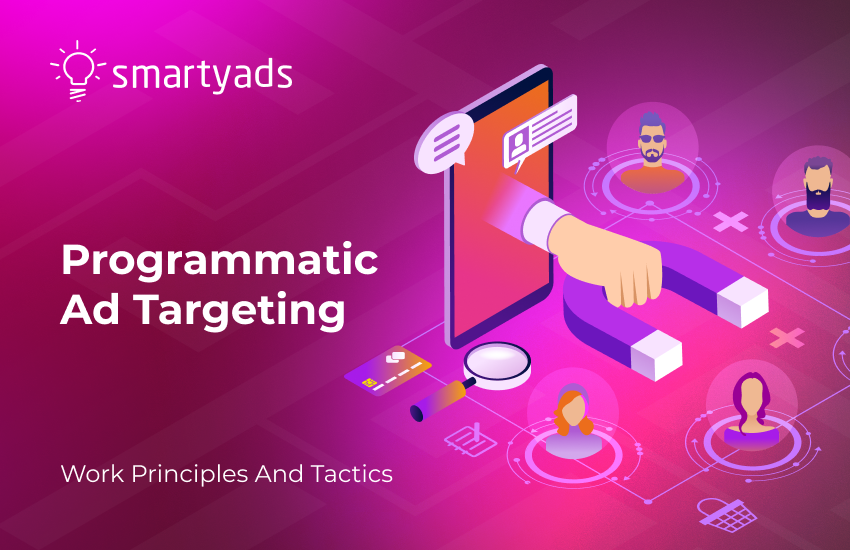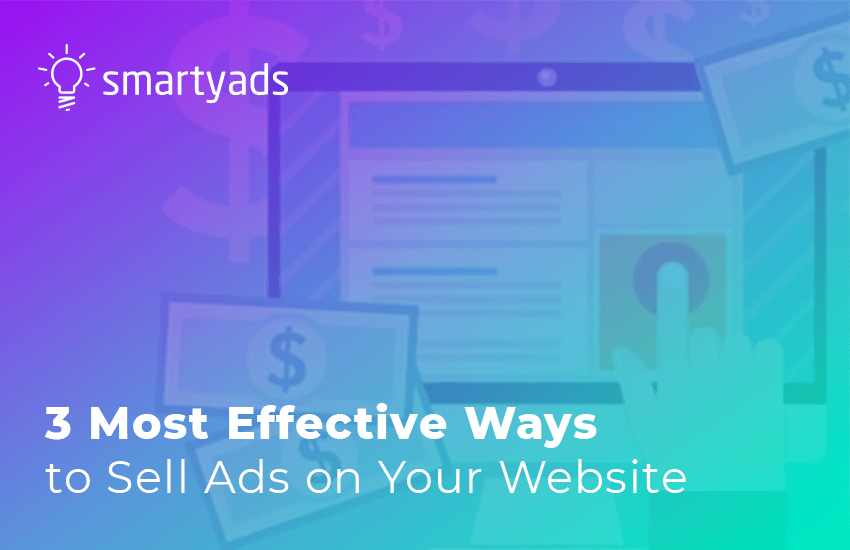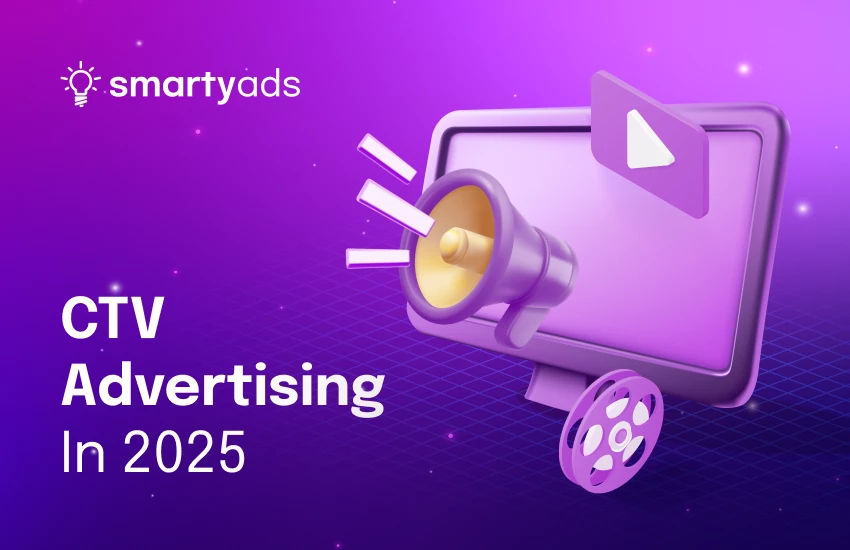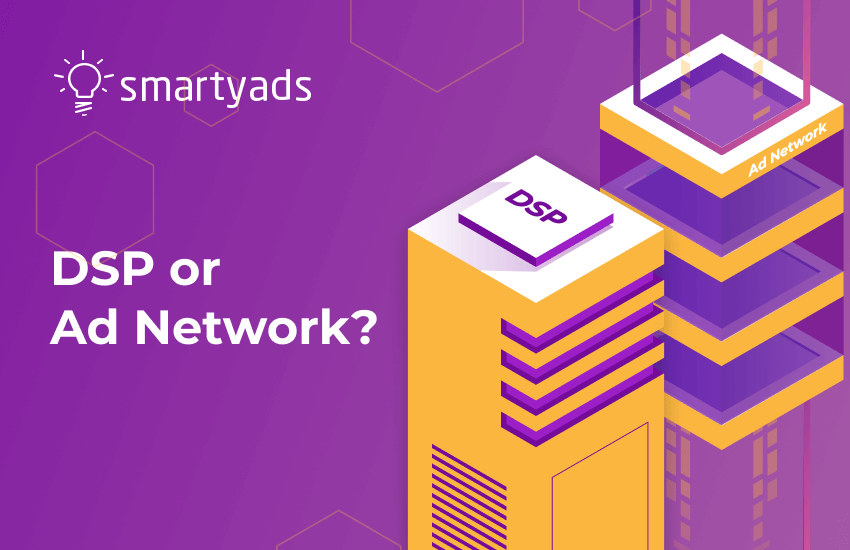Nowadays, the success of any business heavily relies on advertising. It is not enough to create high-quality products; they must also be promoted to the right customers on the right channels.
With programmatic targeting, this process gets significantly simpler. Powered by data, your ads reach exactly those clients most likely to convert, which is not the only benefit.
In this article, we will describe the work principles of programmatic targeting and review different targeting tactics. If you seek to acquire new customers effectively, this guide is for you.

What is programmatic advertising?
Let's start with the basics — the definition of programmatic advertising.
Leveraging AI and ML, programmatic advertising platforms automate the process of buying and selling ad inventory across multiple channels.
As a marketer, you will use a DSP (demand-side platform), one of the components of programmatic. After you set up your advertising campaign, DSP analyzes every available inventory provided by SSP (supply-side platform) to identify those meeting your requirements.
Then, DSP sends a bid response to the ad exchange where the RTB (real-time bidding) auction takes place. If you win, your ad is sent to the publisher and shown to the target audience.
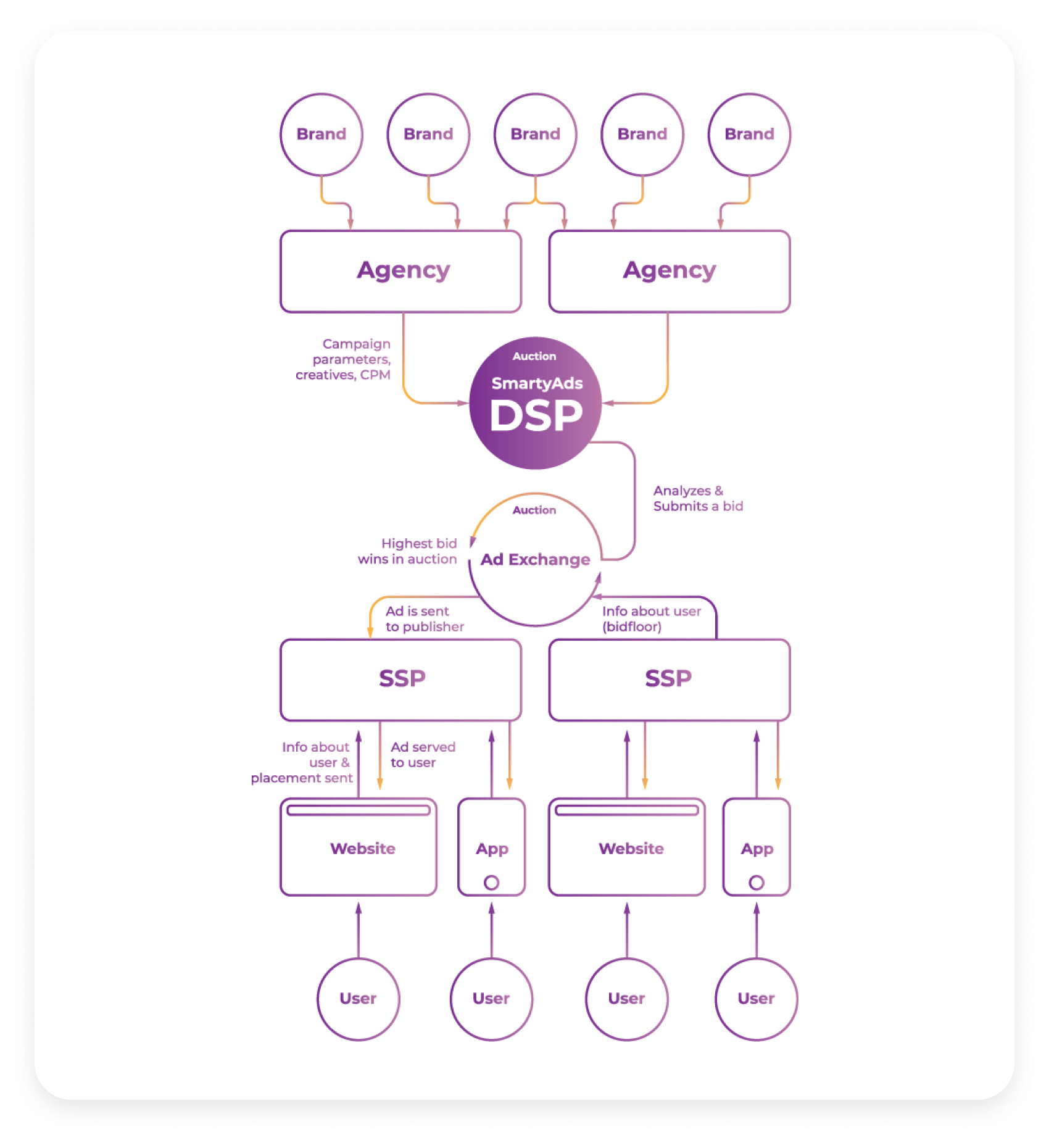
Key components of programmatic
To sum up, the main components of the programmatic advertising ecosystem are as follows:
- DSPs allow advertisers to launch AI-powered advertising campaigns;
- SSPs are platforms for publishers, allowing them to list their ad inventories and provide information to their website visitors;
- Ad exchanges run RTB auctions and perform as connections between SSPs and DSPs. Sometimes, multiple ad exchanges take part in the bidding process;
- Ad servers store ads and deliver them to users after ad exchanges notify them about the winning ads;
- DMPs (data management platforms) are sometimes integrated with SSPs, DSPs, and ad exchanges, allowing data collection and storage.
Note that ad exchanges are often confused with ad networks, but these are different terms.
Ad networks perform as intermediaries and group inventory according to specific audience segments, pricing, etc. They collect inventory from publishers and then sell it to advertisers.
In turn, an ad exchange can be defined as a digital marketplace with no intermediaries.
Programmatic targeting explained
Programmatic ad buying is so effective thanks to precise targeting based on user data, such as gender, country, language, etc.
First-party data is what you gather on your own. For instance, this can be data from analytics platforms, surveys, marketing tools, etc.
In turn, second-party data is collected by a different company and then transferred to you. If you partner with a credible business, it may provide you with some details about your target audience.
Third-party data is gathered by data providers. You can get it via a data management platform or a DSP if it is integrated with DMP.
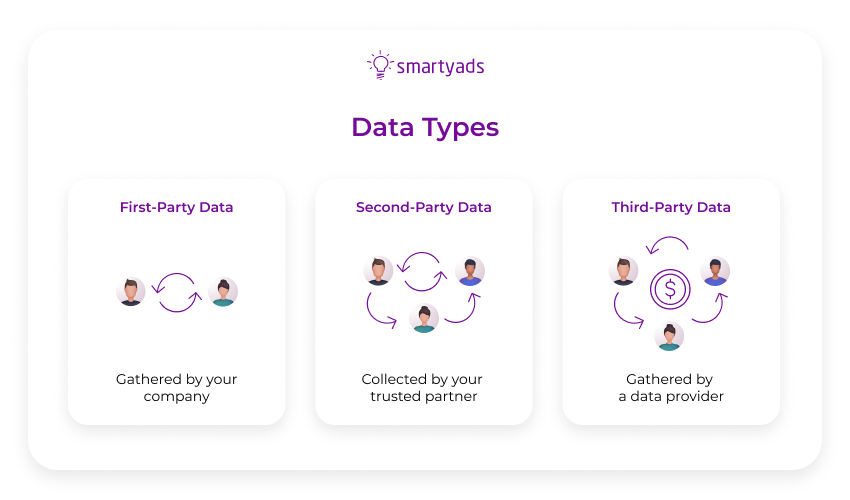
First- and second-party data are more accurate since they are collected individually or by trusted partners. Third-party data can boost your ad campaigns, too, but you should remember that it is shared with a lot of companies.
Besides, you cannot be sure that third-party data was gathered with prior consent.
If you decide to use this type of audience data, prefer reputable providers. In case you are going to collect data on your own, make sure to get your users' consent.
Before selecting a demand-side platform, check what type of data it leverages and if it provides third-party data.
After you collect the essential data (on your own, from your partners, or from third-party data providers), you need to segment it and create user profiles.
Then, according to these profiles, you can set up your programmatic ads and target prospective clients effectively.
Why choose programmatic to engage your target audience?
Programmatic ad buying revolutionized the world of advertising, and nowadays, using DSP platforms is a must for businesses due to the following reasons:
- Numerous programmatic targeting options allow you to reach exactly those clients who are most likely to get interested in your products or services. You deliver personalized experience via relevant channels, so your sales increase;
- The process of getting the right ad placement is very fast, while placing ads manually can be a very time-consuming task;
- Programmatic advertising cost is under your total control. Thanks to automation, programmatic is a more cost-effective method than manual ad placing;
- Since ads are placed automatically, you can focus on the core tasks of your business;
- Demand-side platforms allow easy analysis, so you will face no difficulties with measuring the performance of your campaigns;
- Many demand-side platforms offer cybersecurity scanners to prevent bot traffic and protect your programmatic buying budget.

Programmatic targeting options
Now that the working principles of programmatic targeting are clarified let's review the tactics you can apply to your advertising campaigns.
Audience targeting
Audience targeting implies dividing a target audience into segments on the basis of demographic data and interests. These include age, gender, hobbies, values, etc.
When setting up your ad campaign in DSP, you can specify all these parameters so your ads will be served to customers who meet your criteria.
As a result, you will not waste your ad spend on users who are not likely to convert.
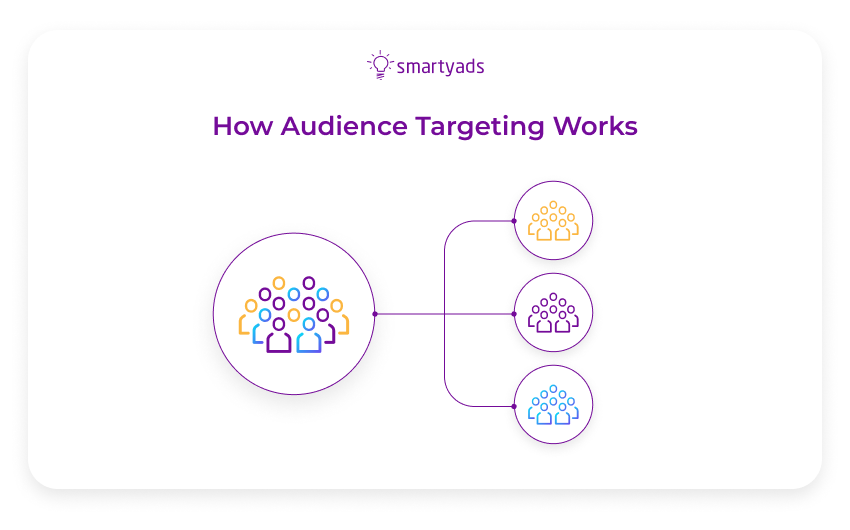
Demographic targeting on its own is rather easy. You can use analytics tools to collect first-party data about your customers.
As for interests, hobbies, values, and other qualitative data, the most effective way to gather it is to interact with your target audience. Create polls and surveys for them, encourage conversations on social media, etc.
This way, you will collect the most relevant and accurate information. In combination with demographic data, it will maximize the efficiency of your digital advertising campaigns.
Note that in terms of audience targeting, personalization can be very helpful. For instance, you are going to promote the same product to several audience segments. Instead of using the same creative, you can slightly alter it to meet the specific needs of every audience group.
Contextual targeting
In digital marketing, contextual targeting is among the most effective methods. Such ads are privacy-friendly and fit the context naturally, so they do not look annoying to users.
For example, a user reads a guide on choosing a leash for a puppy and sees a few banner ads promoting accessories for dogs.
Contextual digital ads are served exactly at the right time and to the right audience. They deliver relevant messaging, so users are likely to get interested in the product.
Contextual targeting is powered by keywords or categories:
- You can select keywords to identify pages suitable for your ads;
- You can place your ads according to relevant IAB (Interactive Advertising Bureau) categories.
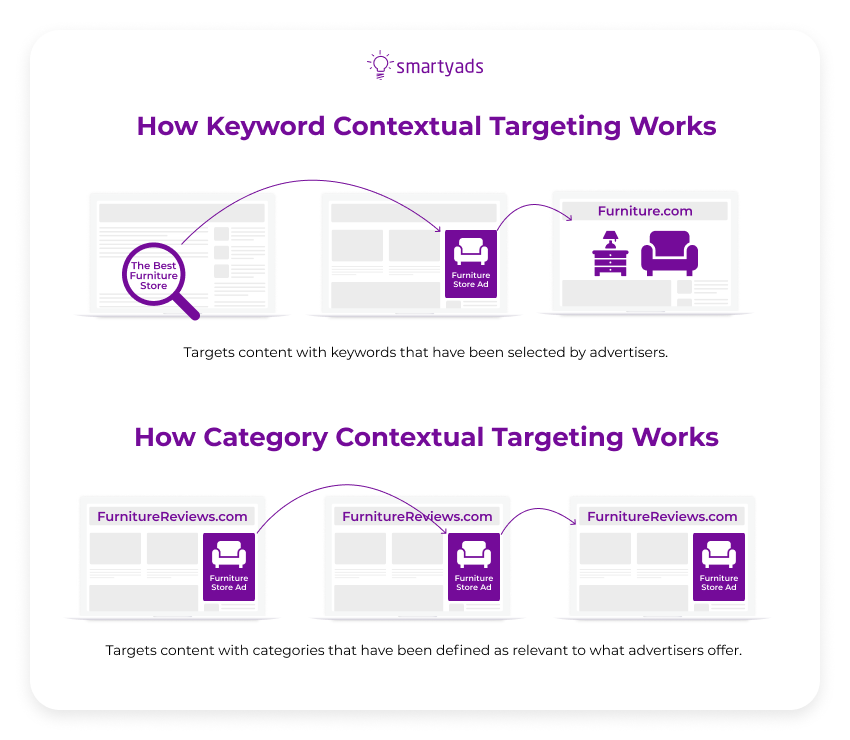
To increase the efficiency of your contextual targeting campaign, you can target pages that include relevant keywords or match specific categories. This way, you will combine both approaches.
Feel free to learn more about contextual targeting here.
Behavioral targeting
Behavioral targeting implies leveraging data about users' behavior on the Internet. This can be search terms, websites they visited, purchases, cart abandonments, buttons clicked, and so on.
For instance, if a user has repeatedly visited a website with reviews of different laptops and sees an ad promoting a laptop, this is behavioral targeting.
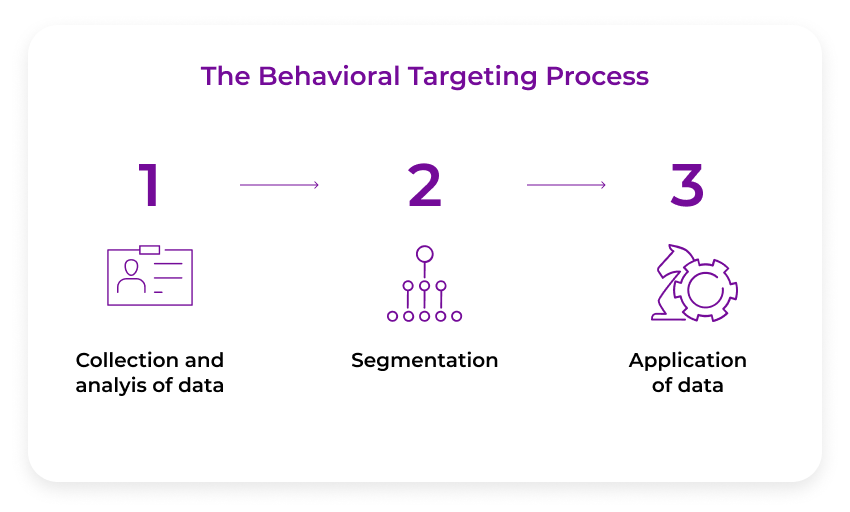
Such targeted ads can be very effective in terms of driving engagement since they are relevant to users' online behavior and actions. They can help you increase conversion rate and sales.
Note that behavioral targeting is sometimes confused with the contextual approach. Contextual ads are placed alongside relevant content, while behavioral targeting works on the basis of users' previous online activity.
Privacy concerns
On the other side, behavioral targeting raises privacy concerns among users, as many of them feel "watched" despite the relevance of the ads.
To keep user data secure, Google is going to eliminate third-party cookies — this is expected to happen in 2024. As a result, behavioral data will become unavailable to advertisers.
However, at the moment, you can still benefit from behavioral targeting. This article will provide you with more insights into behavioral targeting and its types.
Geo-targeting
The meaning of geo-targeting (also known as geographic targeting) is pretty straightforward — such campaigns are set up according to the location of potential customers. Usually, to identify the location, ad servers check users' IP addresses.
For instance, your business is located in New York, and the products are delivered only across the New York state. You are going to launch several display ads to promote your offer. If you specify the location, these ads will be served to the citizens of the relevant state and people visiting it.

In the era of mobile devices, geo-targeting can be a very effective tactic, as you can reach relevant audiences in real time.
Note that geo-targeting works well for major locations, such as countries, states, or cities.
If you aim for higher accuracy, you can try other forms of location-based targeting — for instance, beacon marketing. Learn more here.
Apart from running geo-targeted programmatic campaigns, adding regional keywords to your ad copy and other content would also be useful.
Returning to the example of a business in New York, some users located outside your advertising area may still search for your products or services, and relevant content can help them find you.
Cross-device targeting
Cross-device targeting means delivering digital ads to the same user across multiple devices. For instance, a potential customer sees an ad while surfing the Internet on their laptop. Then, they see a different ad for the same product when using their smartphone.
Nowadays, people devote loads of time to various gadgets, including their computers, smartphones, CTVs, etc.
Cross-device programmatic targeting is a way to reach them regardless of the type of device they are currently interacting with.
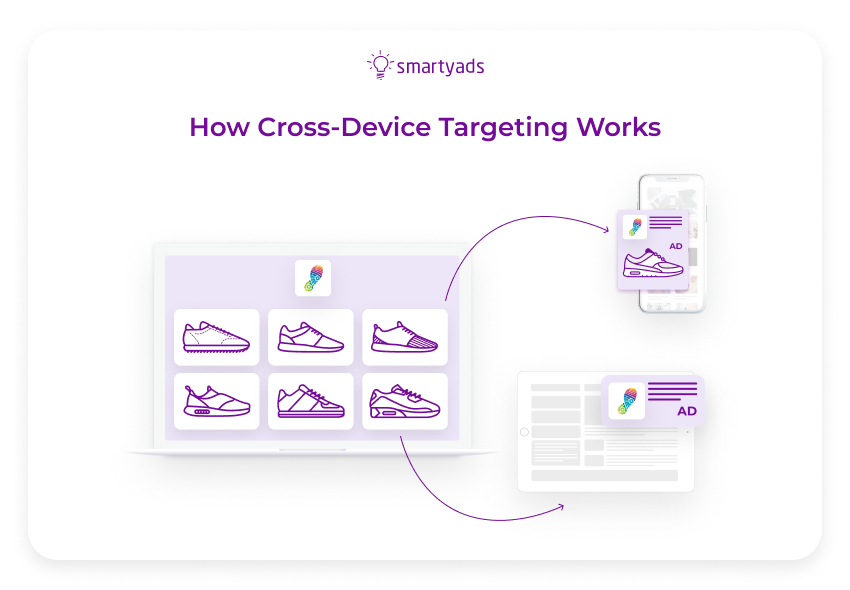
To perform cross-device targeting, you first need to solve the challenge of cross-device tracking. This is essential to confirm that multiple devices belong to the same user. There are two tracking methods to choose from.
Deterministic tracking
This approach implies recognizing PII (personally identifiable information) — for example, email addresses, which are often used as logins across multiple websites and apps.
Phone numbers, credit card numbers, and other unique data can be leveraged, too.
Deterministic tracking is highly precise since it relies on logged-in user data, not assumptions. However, applying this method can also be challenging.
To perform deterministic tracking, you need specific audience data that is not provided by analytics tools. Users are often unwilling to share details like email addresses or phone numbers.
Newsletter sign-up forms are among the most popular methods in terms of collecting email addresses. Apart from this, consider trying other approaches. For instance, you can offer a free consultation to your website visitors and add email and phone number fields to the form.
Look for opportunities, taking into account the specificity of your business.
Probabilistic tracking
In turn, probabilistic tracking involves non-personal data: IP addresses, device IDs, operating systems, location, browser type, language settings, time of the day, etc.
The collected data is analyzed by algorithms to identify the same user across multiple devices.
For example, a person owns a laptop, a tablet, and a smartphone. They mostly use these devices at home, meaning they all have the same location. For probabilistic algorithms, this indicates that all of them are leveraged by the same user.
Obviously, this method is less accurate than deterministic tracking. However, this can be the way to go when you lack personal data.
Retargeting
The retargeting tactic is about reaching users who have interacted with your website or app but have not converted.
Here is an example: a user browses your website and checks several product pages. Then, they leave without buying anything but start seeing display ads promoting your products.
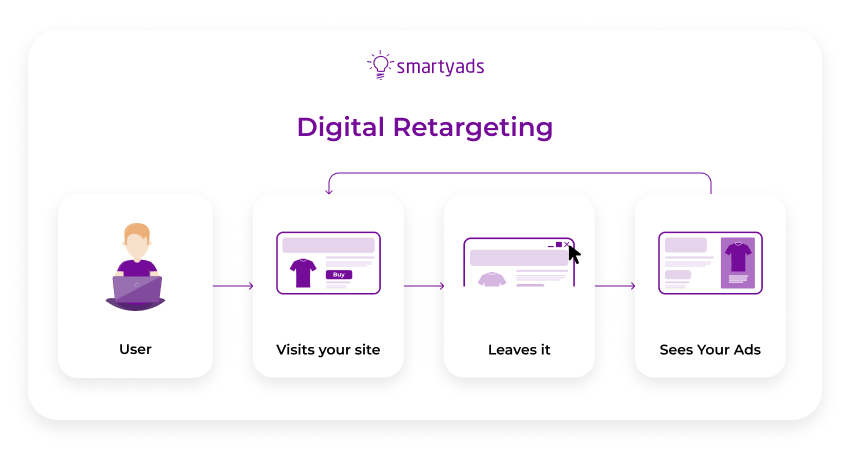
Launching a retargeting advertising campaign allows you to remind online shoppers about your brand and motivate them to take the desired action. It also helps improve brand recognition.
This tactic comes in different models, including behavioral, contextual retargeting, etc. Check this article to learn more about their principles of work.
The only potential challenge here is the fact that retargeting is a cookie-based approach. You can still benefit from it and get relevant ad space, but as we already mentioned before, the era of cookies is coming to an end.
How to choose the right targeting strategies?
In programmatic targeting, you do not have to focus on a specific tactic — you can combine several of them within the same campaign to reach better results.
A lot of programmatic advertising platforms like SmartyAds allow doing this. For instance, you can specify not only gender but also geolocation and operating system, and all this in the context of a single campaign.
This way, you can apply several targeting approaches at once. In general, the more details you provide about your target audience when setting up your campaigns, the better.
When choosing a DSP, check what targeting settings it offers.
At the same time, certain approaches may be more important for you than others. For example, if you deliver your products only across a specific location, geo-targeting will play a crucial role for you.
Identify if there are any tactics that you should prioritize. Then, check what audience data you already have and discover if it is essential to conduct additional research in order to launch your targeted ads.
Note that you should continuously analyze the performance of your campaigns and collect more data about your audience.
If you keep your buyer persona profiles up to date, it will be easier for you to improve your ads' effectiveness.
You can also experiment with different ad formats to define the most effective options.
Final words
With programmatic targeting, you can significantly increase the efficiency of your advertising campaigns. If you provide a sufficient amount of relevant data, your ads will be shown exactly to the audience interested in your products or services.
This way, you will increase your conversion rate and sales while the amount of manual work will be reduced. Programmatic advertising platforms automate a lot of tasks so that you and your team will be able to focus on your core goals.
Collect relevant data about your audience, select a proper platform, and apply multiple programmatic targeting tactics to your campaigns. Make sure to measure the performance of your targeted ads to optimize future campaigns and refine your buyer persona profiles.
Boost your advertising campaigns with programmatic targeting. Register on SmartyAds DSP now!
FAQ
Here are answers to a few frequently asked questions about SmartyAds programmatic targeting
The list of available settings includes but is not limited to the following:
- Gender;
- Age;
- Geolocation;
- Language;
- Connection type;
- Browser;
- Time zone;
- Device;
- IAB categories.
Yes, you can launch retargeting campaigns with SmartyAds DSP. Learn more about its features here.
Yes, SmartyAds DSP supports GPS targeting, and you can use this feature to target specific areas.
No. To ensure higher accuracy and effectiveness of your programmatic targeting campaigns, we recommend you leverage first- or second-party data instead of third-party data.

